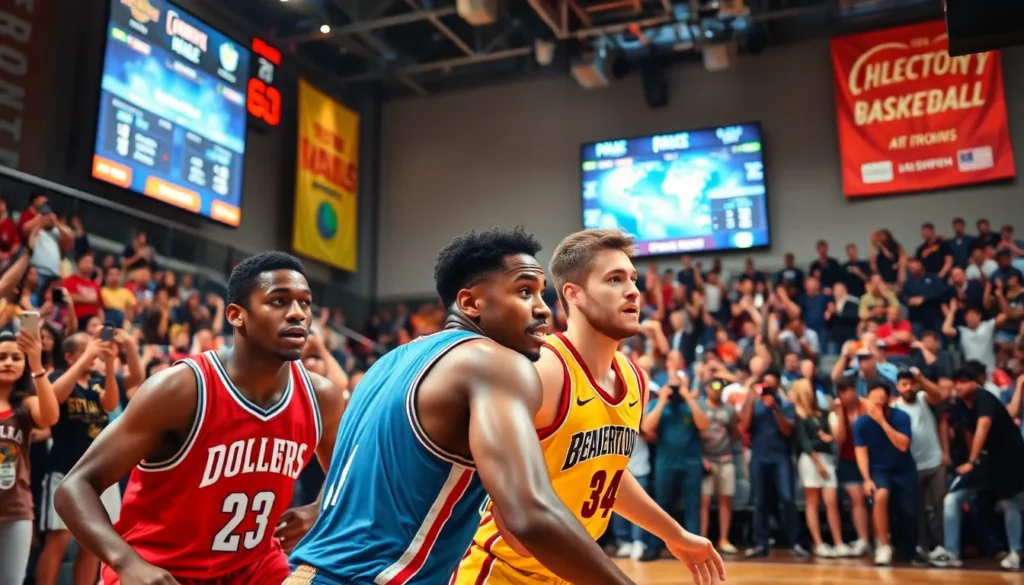In the dynamic world of sports, rate competitions have steadily become an integral aspect of event management and revenue generation. As sports leagues and organizations navigate the complexities of audience engagement and financial sustainability, understanding the nuances of these competitions is paramount. This article delves into the concept of rate competitions, the implications of the emerging Plateau Deal, and what the future holds for this innovative approach in the sports industry.
Table of Contents
ToggleUnderstanding Rate Competitions in Sports

What Are Rate Competitions?
Rate competitions are competitive events where various entities, such as teams, leagues, or athletes, aim to secure optimal deals for broadcasting rights, sponsorships, and other revenue-generating avenues. They typically involve bidding processes, negotiations, and collaborations, wherein the ultimate objective is to maximize exposure and profitability. As sports have evolved into a multi-billion dollar industry, rate competitions have emerged as a critical mechanism for organizations to remain competitive and financially viable.
The Importance of Rate Competitions in Sports
The significance of rate competitions cannot be overstated. Firstly, they foster healthy competition among stakeholders, which can lead to better quality broadcasts and enhanced fan experience. Secondly, they help significant revenue streams for teams, enabling investment in infrastructure, player development, and marketing strategies. Also, effective rate competitions can impact the overall popularity of sports, influencing how leagues and events are perceived at both national and international levels.
How Rate Competitions Work
Key Players in Rate Competitions
In the realm of rate competitions, several key players interact to shape outcomes. These include sports leagues, television networks, streaming platforms, and advertisers. Leagues, such as the NFL or NBA, set the stage by offering broadcasting rights to the highest bidder. Television networks and streaming services compete vigorously to acquire these rights, driving up the price and increasing the stakes. Advertisers also play a crucial role, as their investments can significantly influence a league’s overall revenue structure.
Current Trends and Developments
As technology evolves, rate competitions are adapting to include innovative platforms and approaches. The rise of streaming services has altered the broadcasting landscape, forcing traditional networks to rethink their strategies. Also, data analytics has allowed sponsors and teams to better understand audience preferences, making it a more data-driven competition. For instance, leagues are now engaging in dynamic pricing for ticket sales, aligning with real-time demand analysis.
The Plateau Deal Explained
What Is the Plateau Deal?
The Plateau Deal refers to a recent agreement in the sports industry aimed at stabilizing revenue streams amid fluctuating viewership and economic uncertainty. It is designed to create a level playing field for franchises with varying financial capacities by instituting minimum revenue guarantees and enhancing partnerships among stakeholders. This deal seeks to mitigate risks associated with rate competitions, ensuring that all parties involved have a stake in the success of the collective.
Impacts of the Plateau Deal on Sports Economics
The economic implications of the Plateau Deal are profound. By providing financial stability, teams are empowered to invest in talent acquisition and infrastructure, improving the overall quality of the leagues. It also opens avenues for smaller franchises to compete effectively without restraining their growth potential. As a result, fan engagement may see a boost, enhancing the overall health of the sport as a whole.
Future of Rate Competitions and Plateau Deal
Predictions for Upcoming Seasons
Looking ahead, the landscape of rate competitions is likely to become more intense. As esports and non-traditional sports gain popularity, traditional sports leagues will need to evolve their rate competition strategies. Changes in consumer behavior, especially with younger audiences favoring on-demand content, may drive further innovation in how leagues package and present their offerings. It’s predicted that personalized viewer experiences will become a key focus, requiring leagues to adapt continuously.
Challenges Ahead for Rate Competitions
Even though the promising outlook, challenges loom large on the horizon for rate competitions and the Plateau Deal. The saturation of the market, with an overwhelming number of viewing options, could dilute fan engagement. Besides, economic volatility might challenge revenue projections, prompting stakeholders to reassess their strategies. Balancing competitive integrity with financial performance will be paramount.
Conclusion
To conclude, the evolution of rate competitions and the introduction of the Plateau Deal mark significant developments in the sports industry. While these changes promise enhanced revenue stability and equitable competition, the path forward will require careful consideration of new trends and challenges. Stakeholders must remain agile and proactive to navigate this complex landscape effectively, ensuring the sustained growth and appeal of sports in a rapidly changing environment.






